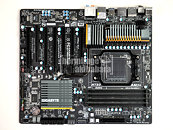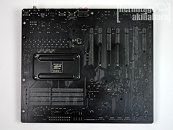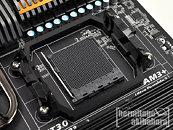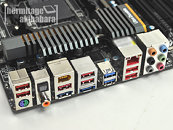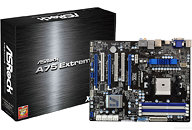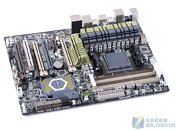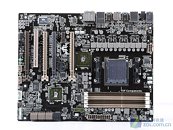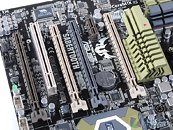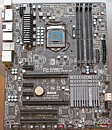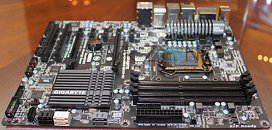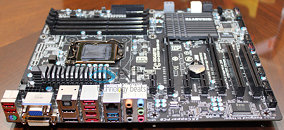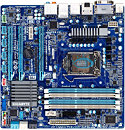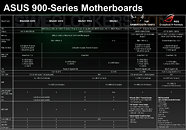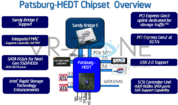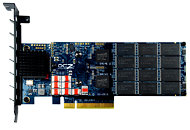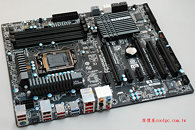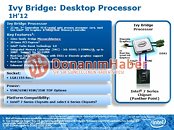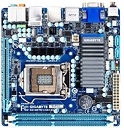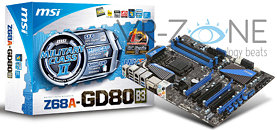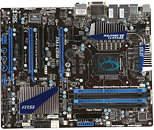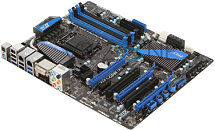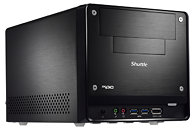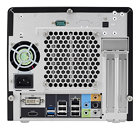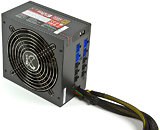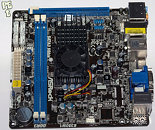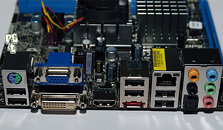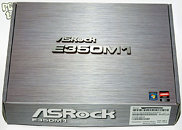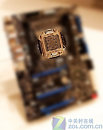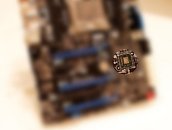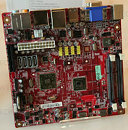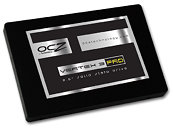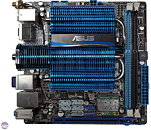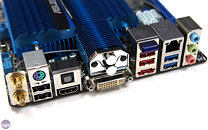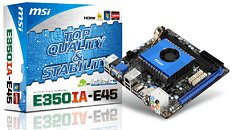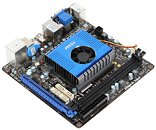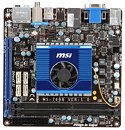
Gigabyte GA-990FXA-UD7 Top-Tier Socket AM3+ Motherboard Pictured
After displays of socket AM3+ motherboards based on AMD 990FX chipset, by ASUS, and MSI were pictured by various tech sites, it's quite expected of Gigabyte's offering to somehow make it to the web. Gigabyte is going full guns with its top AM3+ motherboard, with the GA-990FXA-UD7. Based on the same Black+Graphite+Gold color scheme as the socket LGA1155 "UD7" models based on Intel P67 and Z68, the GA-990FXA-UD7 comes with zesty dimensions that almost make it an EATX form-factor board, although it's not. The AM3+ socket is powered by a 10-phase VRM that is cooled by a long heatsink that appears to be contiguous with the northbridge heatsink, which in turn shares heat with the southbridge over a heat pipe. The socket is wired to four DDR3 DIMM slots supporting DDR3 frequencies in excess of 1866 MHz.
Gigabyte utilized each of the seven expansion slots, packing in six PCI-Express 2.0 x16 neatly spaced out to support NVIDIA 4-way SLI and AMD 4-way CrossFireX; two out of six slots two are electrical x4, wired to the southbridge. A legacy PCI slot is thrown in, just in case you hate to throw away that expensive PCI sound card that still sounds great. Storage connectivity includes eight internal SATA 6 Gb/s ports, six from the SB850 southbridge, and two from a third-party controller. There are two eSATA ports, of which one appears to be power-eSATA.
Gigabyte utilized each of the seven expansion slots, packing in six PCI-Express 2.0 x16 neatly spaced out to support NVIDIA 4-way SLI and AMD 4-way CrossFireX; two out of six slots two are electrical x4, wired to the southbridge. A legacy PCI slot is thrown in, just in case you hate to throw away that expensive PCI sound card that still sounds great. Storage connectivity includes eight internal SATA 6 Gb/s ports, six from the SB850 southbridge, and two from a third-party controller. There are two eSATA ports, of which one appears to be power-eSATA.
